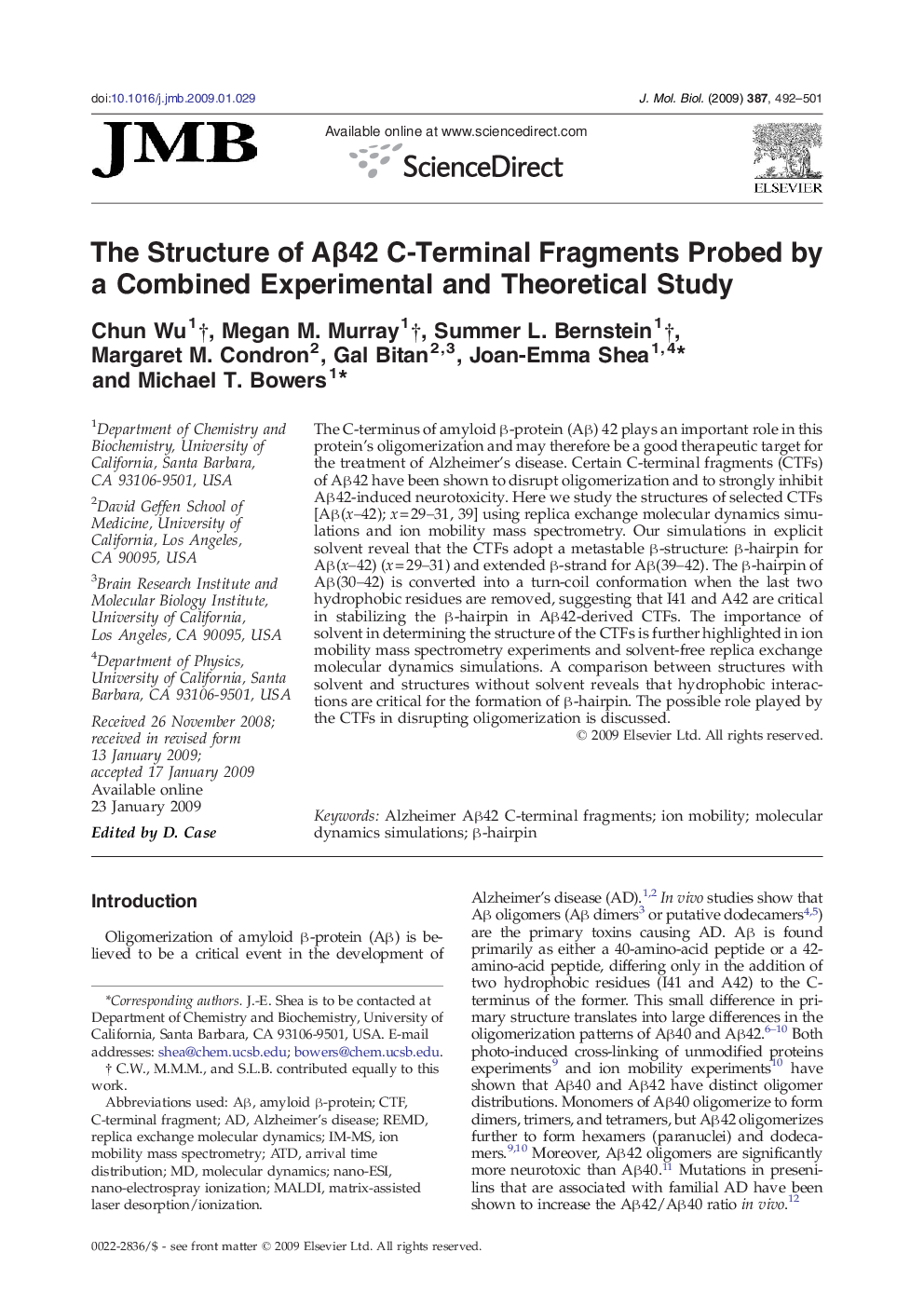| کد مقاله | کد نشریه | سال انتشار | مقاله انگلیسی | نسخه تمام متن |
|---|---|---|---|---|
| 2186607 | 1096068 | 2009 | 10 صفحه PDF | دانلود رایگان |

The C-terminus of amyloid β-protein (Aβ) 42 plays an important role in this protein's oligomerization and may therefore be a good therapeutic target for the treatment of Alzheimer's disease. Certain C-terminal fragments (CTFs) of Aβ42 have been shown to disrupt oligomerization and to strongly inhibit Aβ42-induced neurotoxicity. Here we study the structures of selected CTFs [Aβ(x–42); x = 29–31, 39] using replica exchange molecular dynamics simulations and ion mobility mass spectrometry. Our simulations in explicit solvent reveal that the CTFs adopt a metastable β-structure: β-hairpin for Aβ(x–42) (x = 29–31) and extended β-strand for Aβ(39–42). The β-hairpin of Aβ(30–42) is converted into a turn-coil conformation when the last two hydrophobic residues are removed, suggesting that I41 and A42 are critical in stabilizing the β-hairpin in Aβ42-derived CTFs. The importance of solvent in determining the structure of the CTFs is further highlighted in ion mobility mass spectrometry experiments and solvent-free replica exchange molecular dynamics simulations. A comparison between structures with solvent and structures without solvent reveals that hydrophobic interactions are critical for the formation of β-hairpin. The possible role played by the CTFs in disrupting oligomerization is discussed.
Journal: Journal of Molecular Biology - Volume 387, Issue 2, 27 March 2009, Pages 492–501